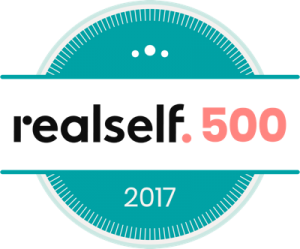What Is The Difference In Recovery Time For Fat Transfer Versus Tummy Tuck?
This week, Atlantic Coast Aesthetics’ Chief Medical Officer and founder, Dr. Thomas Pane, is taking our Question of the Week from a viewer in Palm Beach Gardens. The viewer asks, “Is the healing process the same for fat transfer to the buttocks from the abs as it is for a tummy tuck?”
Dr. Pane said that the healing process is not the same. Because the procedures are different in both how they are approached and the intended outcome, and affect different areas of the body unless they are combined into a single procedure, which can and does sometimes occur, the aftercare and healing processes for each surgery are also going to be different. A tummy tuck is mainly concerned with removing excess skin and tightening the abdominal musculature, while as the name implies, a fat transfer takes adipose tissue from one part of the body and places it elsewhere, as from the abdomen to the buttocks for a Brazilian butt lift.
Essentially, the recovery for a fat transfer is a liposuction recovery. Depending upon where the fat is transferred to, that area may need to be given extra care and caution for a few days to several weeks. For example, wearing confining bras, bathing suits and so forth or lying prone on one’s stomach would generally not be recommended if the fat transfer were being done from the abdomen to the breasts. Likewise, sitting or lying flat on one’s back could lead to slower healing, compression or flattening of the relocated fat or other possible complications if the adipose tissue was transferred into the buttocks.
Liposuction recovery generally involves diffuse soreness or an aching feeling, while a tummy tuck, which typically requires the removal of excess abdominal skin and is a more invasive procedure all around, will have a similar level of discomfort immediately after but in a more limited area. The predominant difference in terms of how the two types of surgical aftercare are addressed mainly lies in the range of motion the patient can expect to be able to undertake, although getting up and being active the same day as the surgery is typically encouraged.

Leaving aside specific body positions that are proscribed for at least the first week, such as no sitting, no lying on the back or stomach as appropriate and similar restrictions, the basic aftercare would be much the same. Lifting heavy weights or objects, aggressive physical activity such as long-distance running or other activities that may place an undue strain on the surgical site(s) should be avoided. Any prescription medications given after surgery should be taken in accordance with the printed and verbal instructions from the surgeon or staff, and any other aftercare directions should be rigorously observed to minimize the risk of complications.
Normally, after about a week cosmetic surgery patients should be able to gradually begin working up to increasing levels of physical activity. By the sixth week post-op, patients can expect to be at full normal function, although in some cases full healing may take several weeks longer. Complete recovery may take as little as three months or as long as a year, primarily depending upon the patient’s overall physical health, habitual and environmental factors such as smoking, alcohol consumption and exposure to direct sunlight. What activities may be restricted and to what degree is typically dependent upon what area(s) were impacted by the procedure and the type of procedure performed.
Cosmetic surgery has come a long way since its inception, but like all surgical procedures, it does carry some risks and possible side effects. Patient awareness and education about how a given surgery or complex of surgeries work and what to expect as normal versus abnormal is critical to obtaining the best possible results. In addition, you know your body best, so you should listen to it. If something doesn’t feel or look quite right, it’s better to get it checked out and risk giving a false alarm than it is to ignore it with potentially dire consequences down the road.
RealSelf Patient Reviews of Thomas A. Pane, MD
If you have a question about cosmetic surgery, Dr. Pane and the staff of ACA welcome the opportunity to discuss it with you. You can send your question to us at https://acplasticsurg.com, call us at 514-422-4116 or visit our Facebook page. It’s possible that your question may become the next ACA Question of the Week, and help other patients who share your questions and concerns! Remember, the more you know about the procedures you’re considering, the better your final outcome is likely to be.
*Individual results may vary
